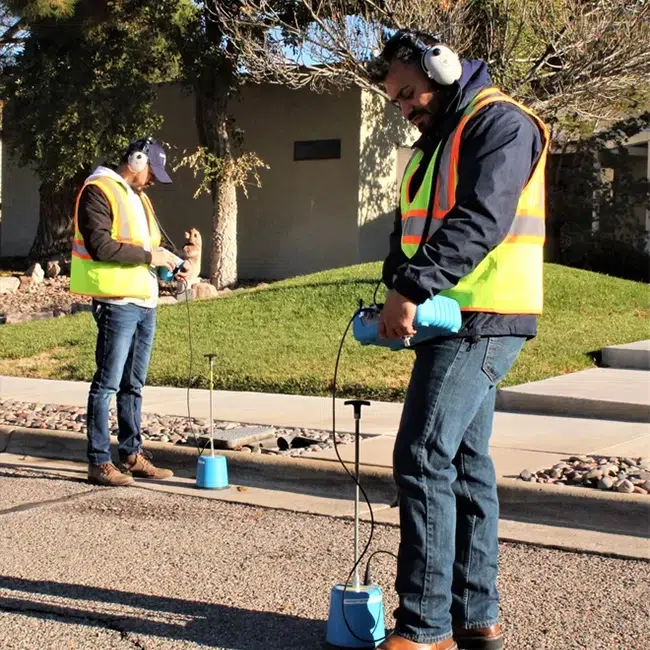Water Leak Detection: How to Determine and Fix Leaks Before They Create Damage
Water Leak Detection: How to Determine and Fix Leaks Before They Create Damage
Blog Article
Cutting-edge Solutions for Very Early Detection of Water Leakages in Buildings and Infrastructure
As the honesty of buildings and framework is extremely important, the challenge of early detection of water leaks has spurred innovative solutions that guarantee to reinvent the method we secure against prospective problems. From advanced leakage detection technologies to the release of IoT sensors for real-time monitoring, the landscape of leak prevention is evolving rapidly. Maker understanding formulas supply a look into the future of leak prediction, while thermal imaging provides a non-intrusive approach for identifying hidden leakages. Automated water circulation evaluation systems are improving just how leaks are identified and attended to, leading the way for a proactive method to water leak discovery. Each of these remedies holds the key to making certain the dependability and long life of our constructed environment, motivating a shift towards a more sustainable and efficient future.
Advanced Leakage Detection Technologies
Advanced leak discovery modern technologies, furnished with advanced sensing units and formulas, play an essential role in swiftly identifying and pinpointing water leaks in various settings. Electromagnetic sensors can recognize modifications in electromagnetic fields caused by water, supplying yet another layer of leak discovery ability.

IoT Sensors for Real-Time Surveillance
In the world of contemporary water leak discovery, the combination of IoT sensing units for real-time monitoring stands for a crucial innovation in boosting aggressive leak detection abilities. These sensing units provide constant monitoring of water supply, supplying real-time data on water circulation prices, stress variants, and temperature level changes. By leveraging IoT technology, these sensors can detect also the smallest abnormalities in water usage patterns, enabling early identification of potential leakages prior to they rise into significant problems.
IoT sensing units transfer data to a central system, where advanced formulas analyze the information and create notifies or alerts when irregularities are identified. This real-time tracking ability permits property proprietors or facility supervisors to promptly attend to leaks, lessening water damage, reducing repair service expenses, and conserving water sources.
Moreover, IoT sensors can be integrated with structure management systems, permitting automatic responses to identified leakages, such as shutting off water shutoffs or activating pumps to reduce the influence of leaks. Generally, the application of IoT sensing units for real-time surveillance considerably improves the efficiency and effectiveness of water leakage discovery in structures and infrastructure.
Machine Knowing Algorithms for Leakage Prediction

One key advantage of using maker learning for leakage forecast is its ability to her explanation continually learn and enhance its accuracy over time. As even more information is gathered and fed right into the formula, it can improve its predictions and adapt to altering conditions, eventually enhancing the dependability of leak detection systems.
Additionally, maker learning formulas can assist in recognizing subtle indications of leaks that may go unnoticed by conventional monitoring approaches. water leak detection. By assessing intricate information collections in real-time, these algorithms can offer very early cautions and alerts, permitting punctual treatment and preventive maintenance to mitigate prospective water damage and associated prices
Utilizing Thermal Imaging for Leak Discovery
Thermal imaging modern technology uses an appealing approach for detecting water leaks in numerous systems and frameworks. By making use of infrared radiation and temperature differences, thermal imaging video cameras can recognize covert leaks that are not conveniently noticeable to the nude eye.
One of the vital advantages of thermal imaging for leakage detection is its non-intrusive nature. Overall, the use of thermal imaging technology improves the effectiveness and precision of water leakage detection, making it a useful tool for preserving the stability of structures and infrastructures.
Automated Water Flow Evaluation Equipments
Just how can automatic water flow evaluation systems revolutionize the detection and management of leaks in different systems and facilities? Automated water circulation evaluation systems published here offer a proactive method to leakage discovery by continuously keeping track of water circulation rates and patterns. By establishing baseline data, these systems can rapidly determine discrepancies that might indicate a leak, allowing prompt treatment to avoid considerable damage.
These systems use sophisticated formulas to analyze real-time more tips here data and give immediate signals when abnormalities are discovered, permitting for swift activity to be taken. Additionally, automated water circulation evaluation systems can be incorporated with building monitoring systems or IoT platforms, boosting overall efficiency and allowing remote tracking capacities.
Additionally, the information gathered by these systems can be made use of for anticipating maintenance functions, aiding to determine potential powerlessness in the framework before leaks happen. Overall, the application of automatic water flow analysis systems can dramatically improve leak detection and administration methods, eventually leading to cost savings, decreased water wastefulness, and boosted sustainability in structures and framework.

Verdict
To conclude, the combination of innovative leak detection technologies, IoT sensors, artificial intelligence formulas, thermal imaging, and automatic water circulation evaluation systems supplies ingenious services for early discovery of water leakages in structures and framework. These technologies enable real-time monitoring, prediction of leakages, and reliable detection techniques to protect against water damages and waste. Implementing these options can help in maintaining the honesty and sustainability of water supply in numerous setups.
Report this page